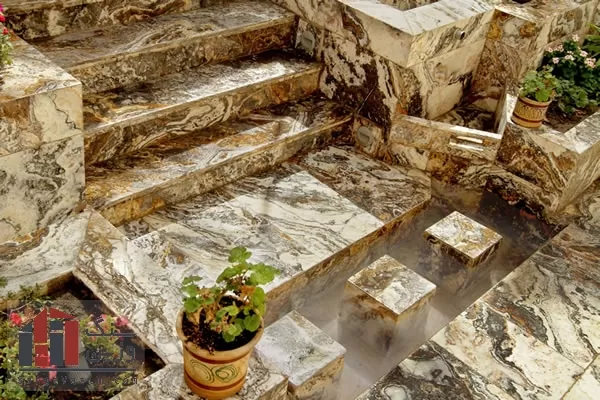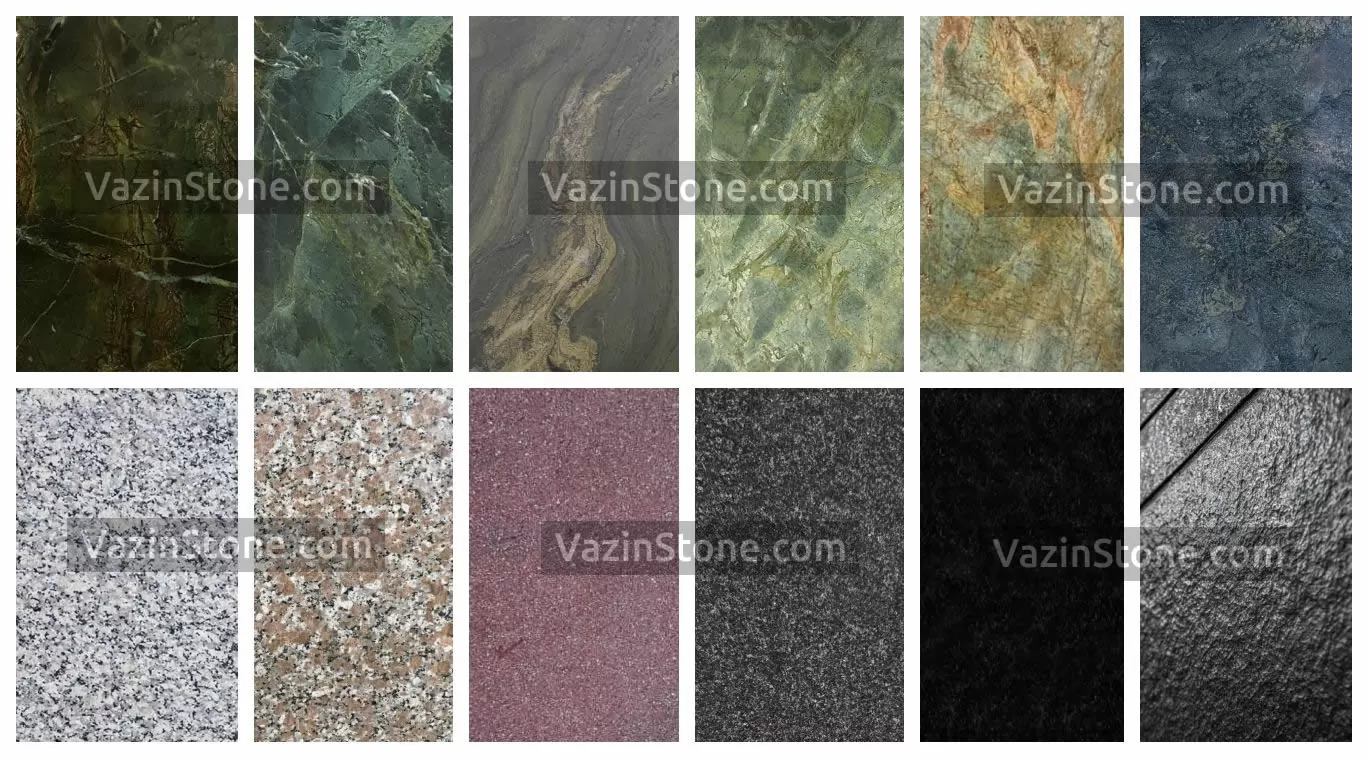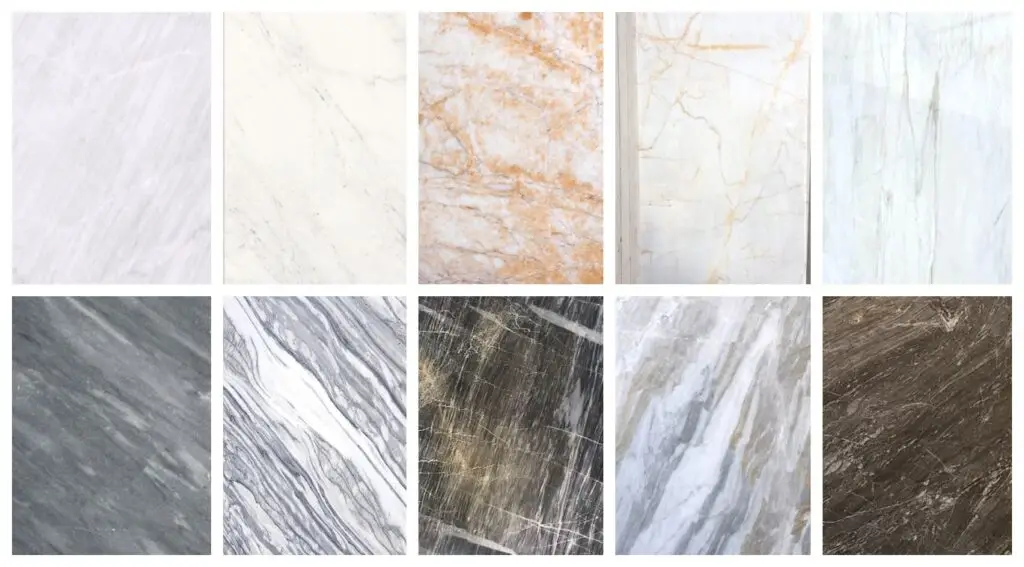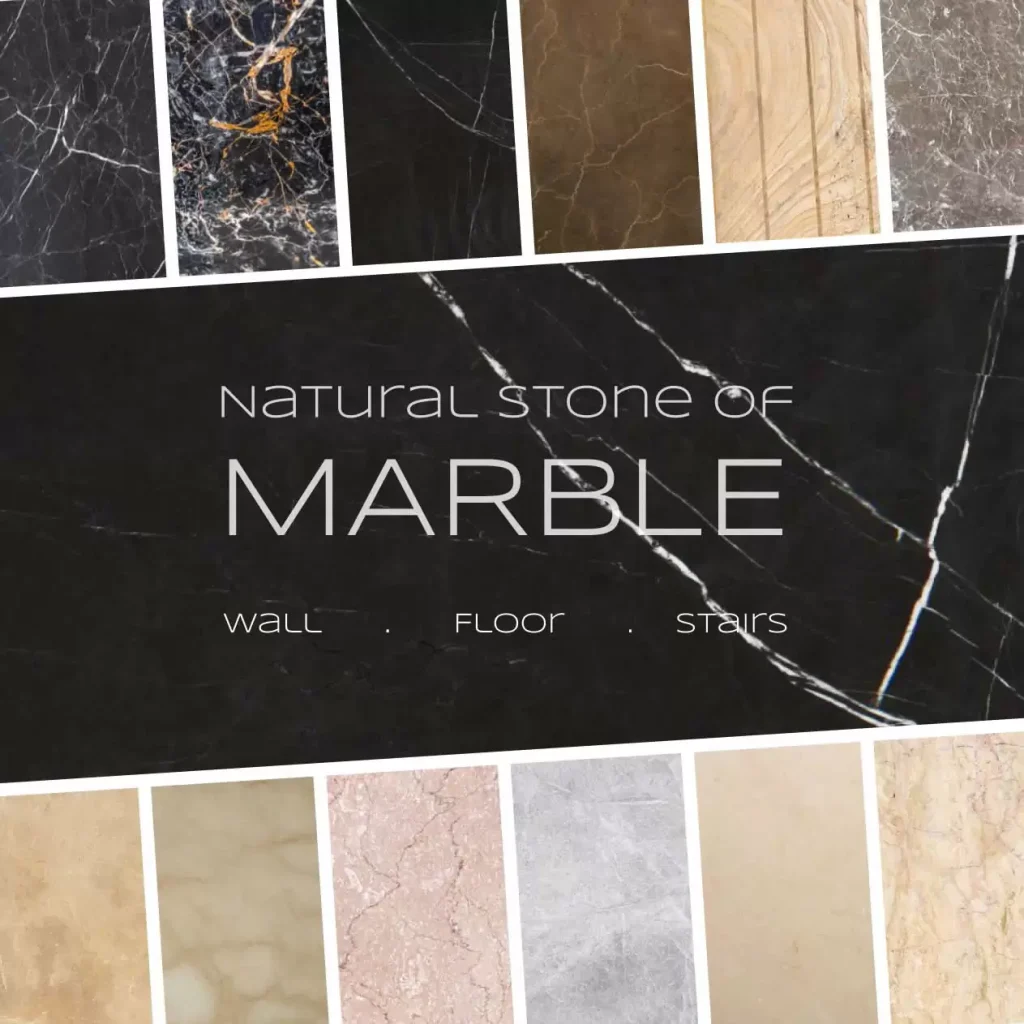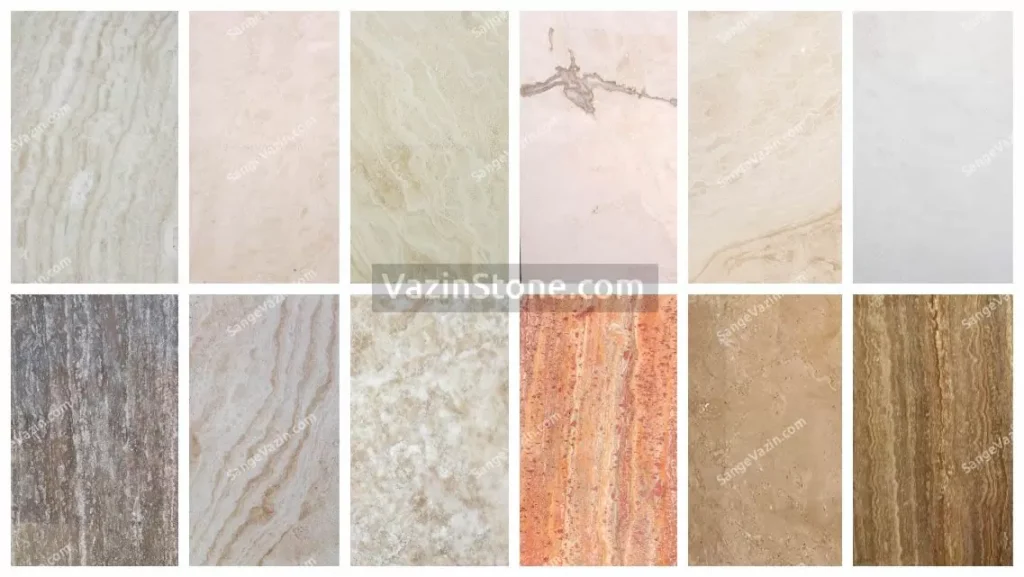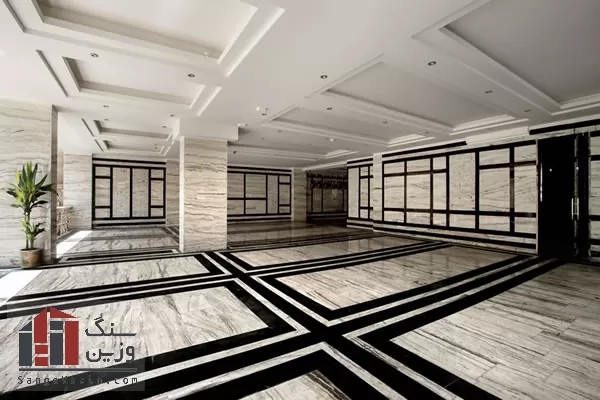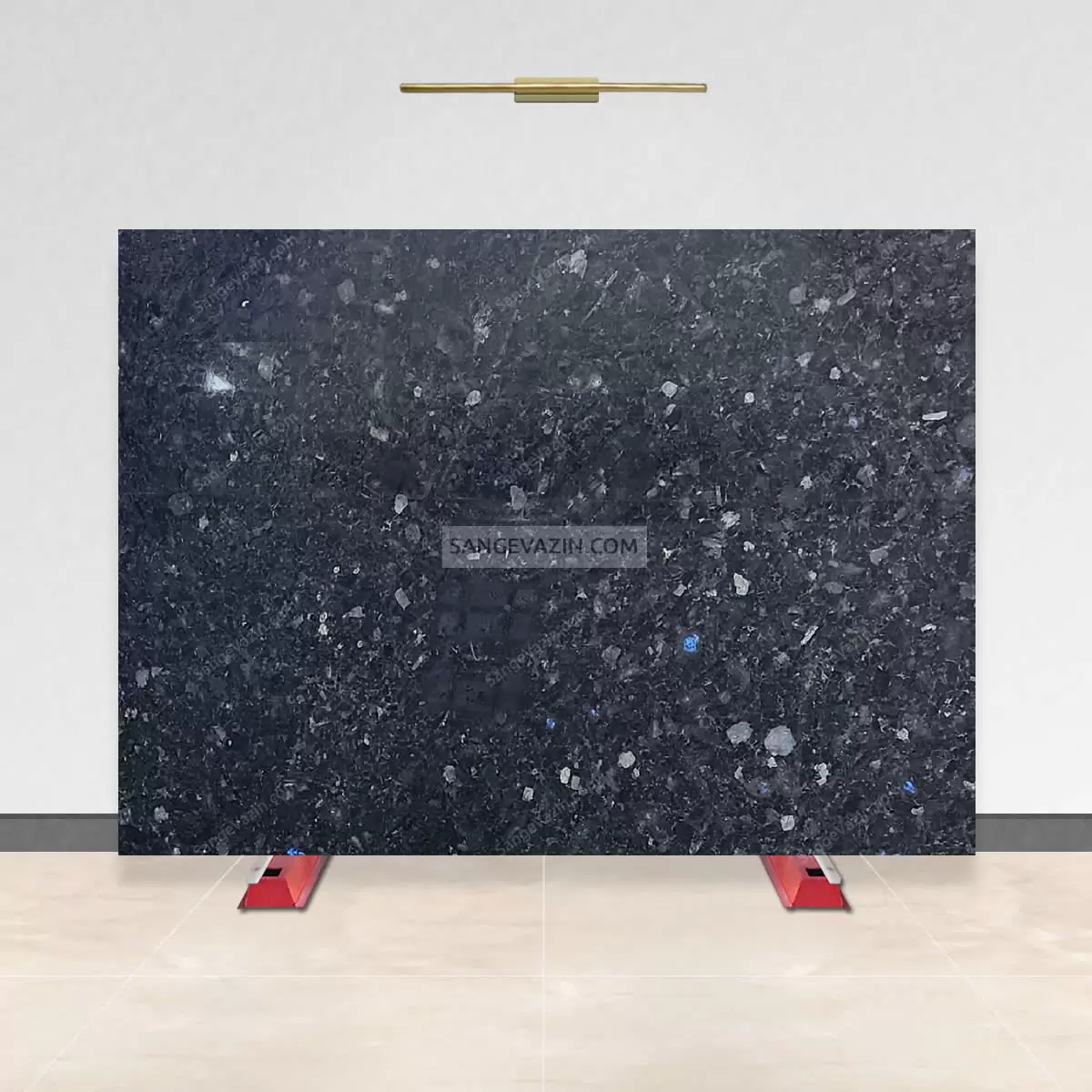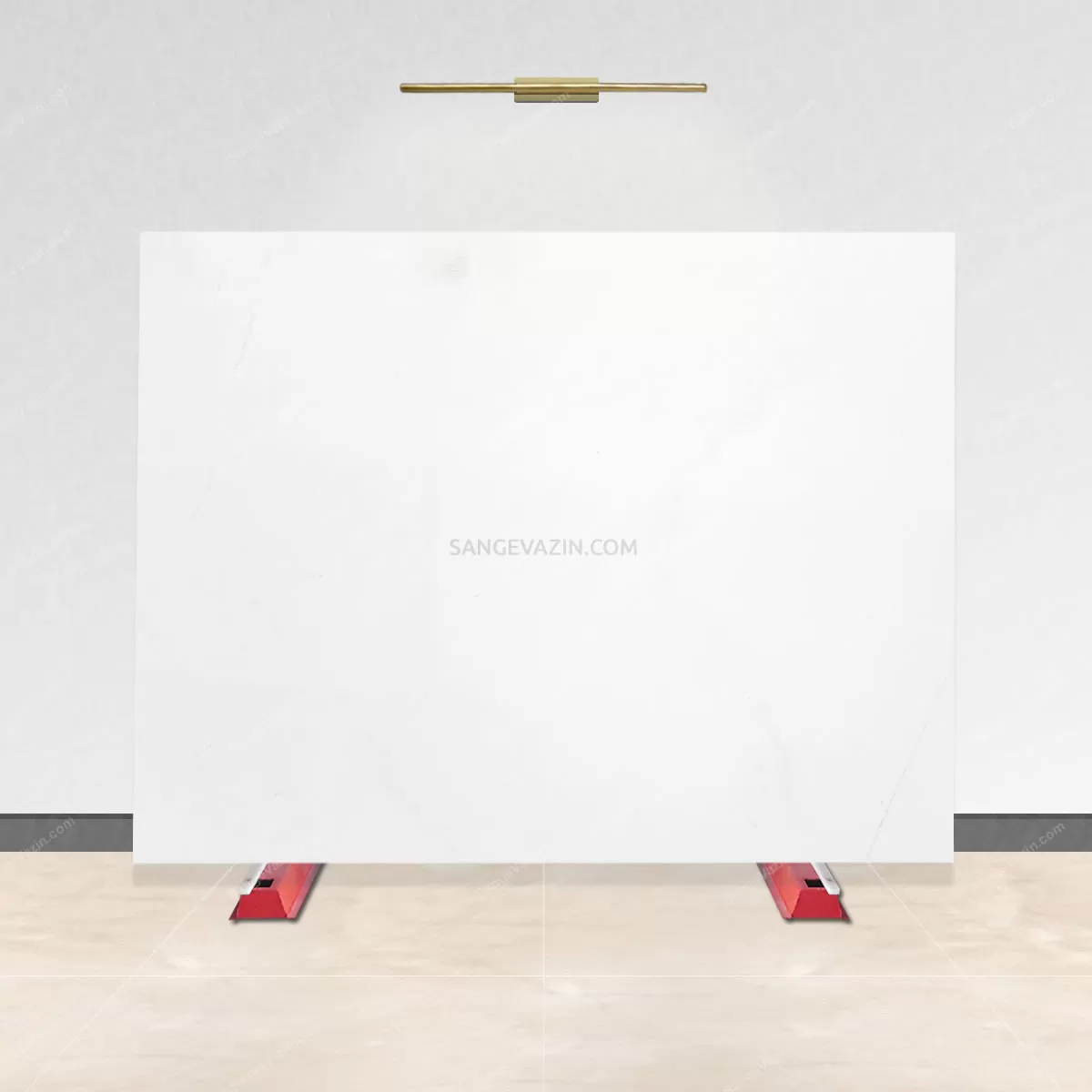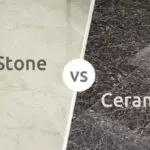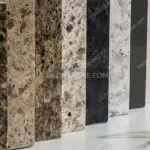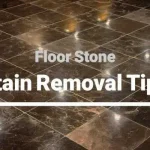A Guide For Selecting The Best Floor Stone
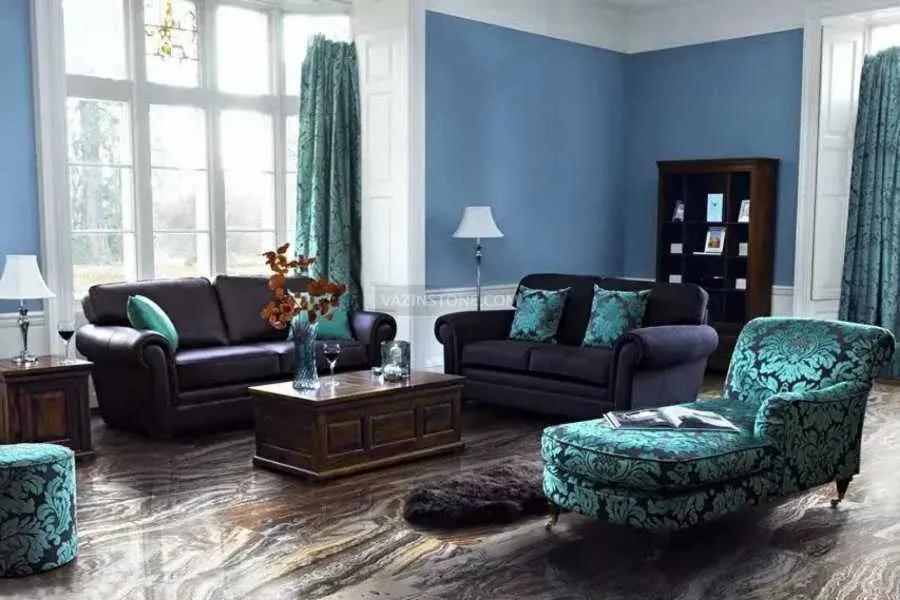
One of the most widely used materials for the building’s exterior and interior is stone. The buildings floor stone will create a stunning and eye-catching place. In other words, both the inside and outside of the building benefit greatly from the proper stone used for the flooring. Keep reading to the end of this text for guidance on selecting a good and proper floor stone for your building.
Table of Contents
Choosing A Good And Proper Floor Stone
Selecting the ideal floor stone for a building flooring involves considering several factors, including the type of usage, the desired color and style, etc. However, the use of standards and scientific selection is the most crucial factor of the subject. The buildings yard and interior are used for quite different purposes than the parking lot`s floor stone. We therefore categorize this topic into three separate sections.
1/ Floor Stone Inside The House:
Marble is the ideal material to use, then travertine. Then at the luxurious level, onyx is utilized. Marble is the most popular and highly valued option when it comes to floor stones. Because, when it comes to building flooring, this stone`s surface is comparatively more uniform than that of its rivals. Also, the floor in your house will look wonderful because of its highly polished and shiny surface.
Pros & Cons Of Marble On The Floor
Pros: Picking marble over other flooring options like ceramic and parquet is advantageous because marble comes in a wide range of colors and patterns, which allows for customization of the floor’s appearance. It can also be used in different sizes according to the setting.
Cons: using stone on the floor has certain disadvantages, including relatively high weight and challenging installation.
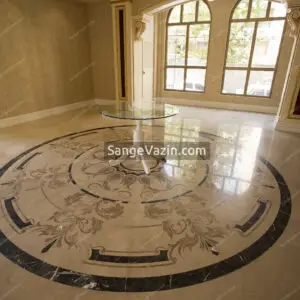



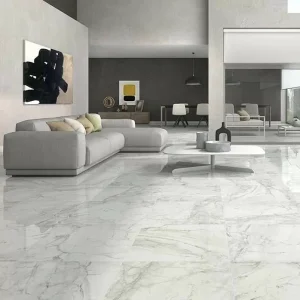
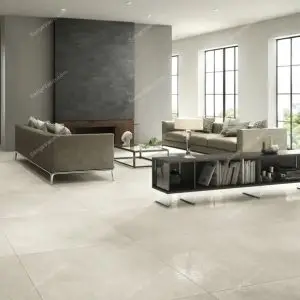

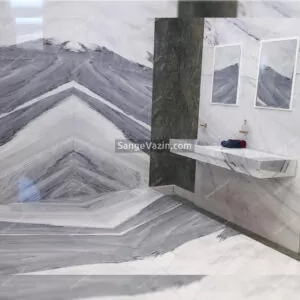
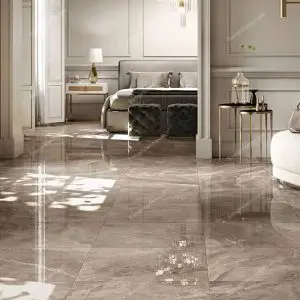
2/ Floor Stone Inside The Building & Outside The House:
Granite is used after marble for indoor spaces like staircases.
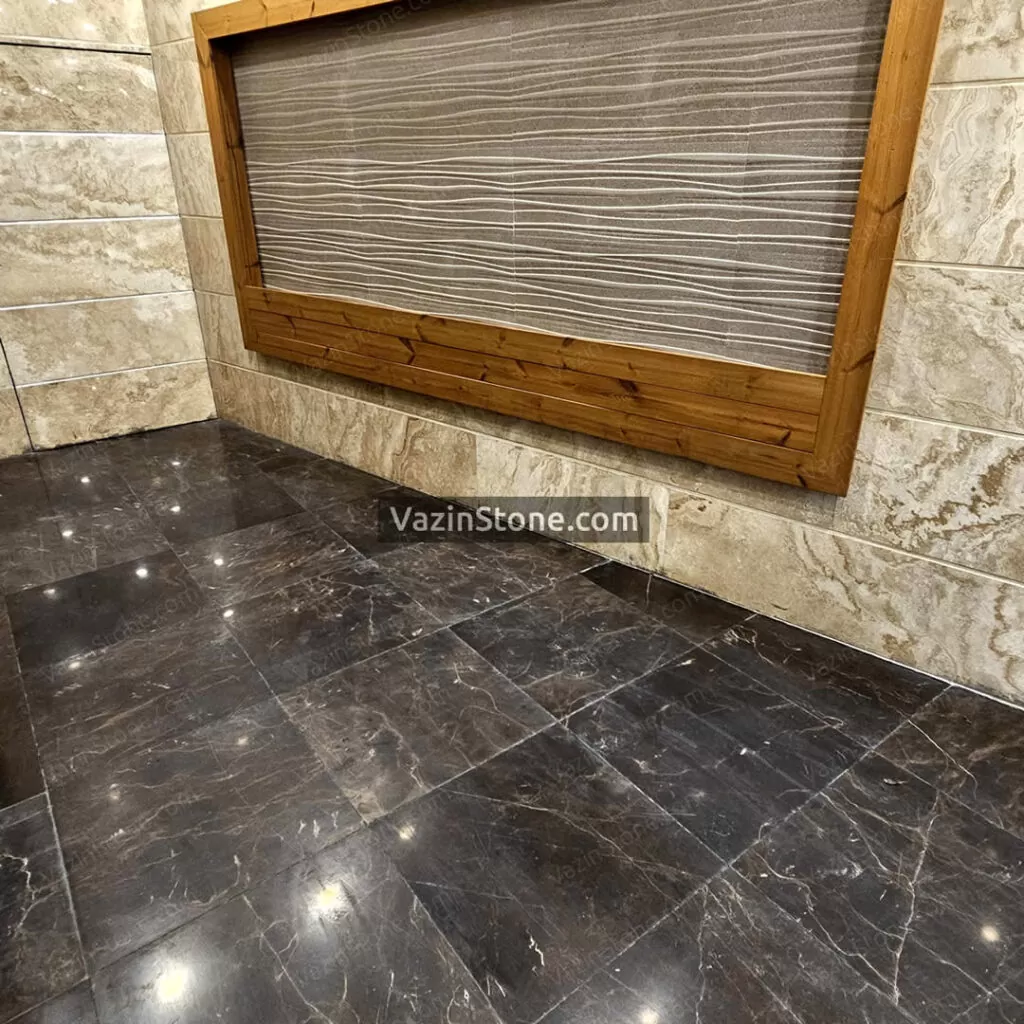
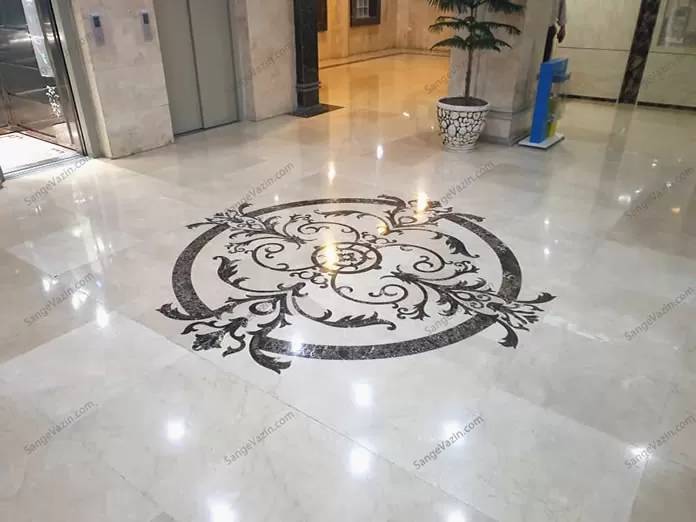
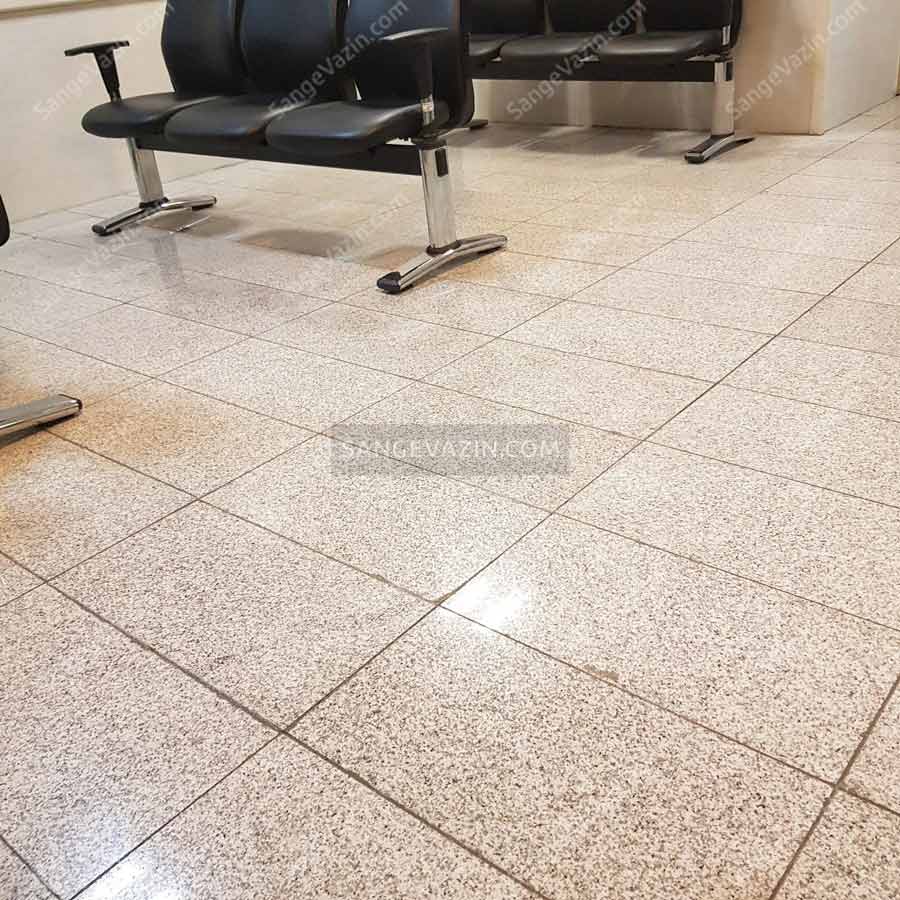
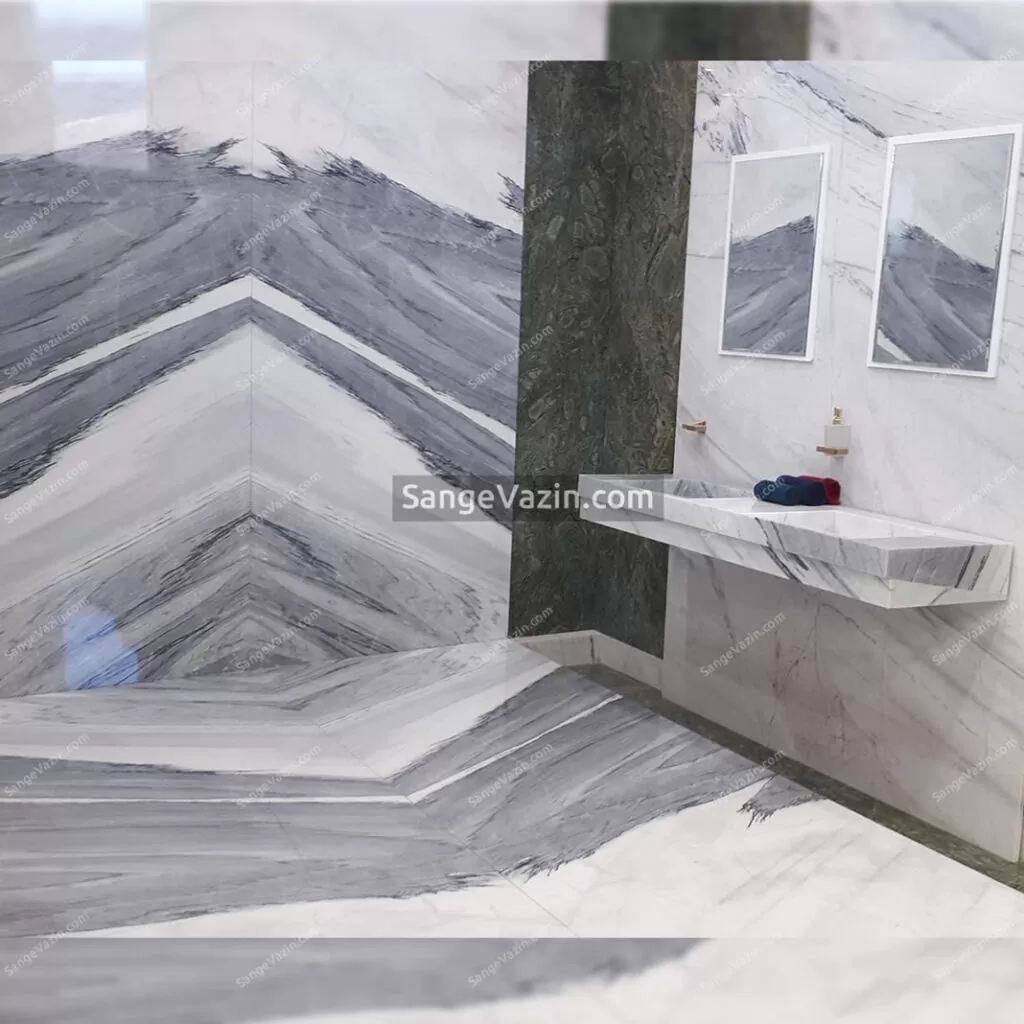
3/ Floor Stone For Outside The Building:
- Granite stone is the greatest choice to use on the floor of the building’s outside.
- Basalt and cubic stones are also regarded as appropriate, standard, and durable choices for outside flooring.
- Also, if you`d like, you can utilize high-thickness, natural-finished marble and travertine items. (A thickness of less than 2 cm will increase the chance of breaking and cracking).
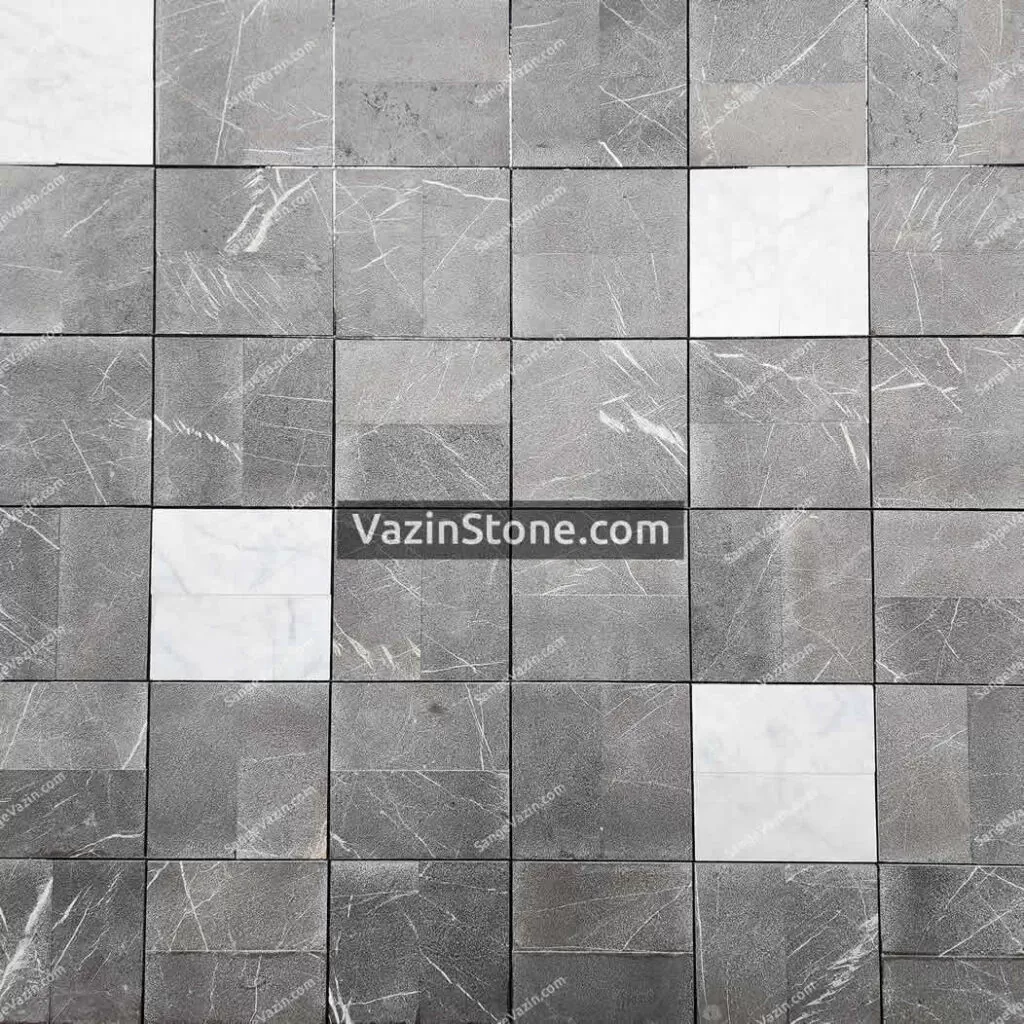
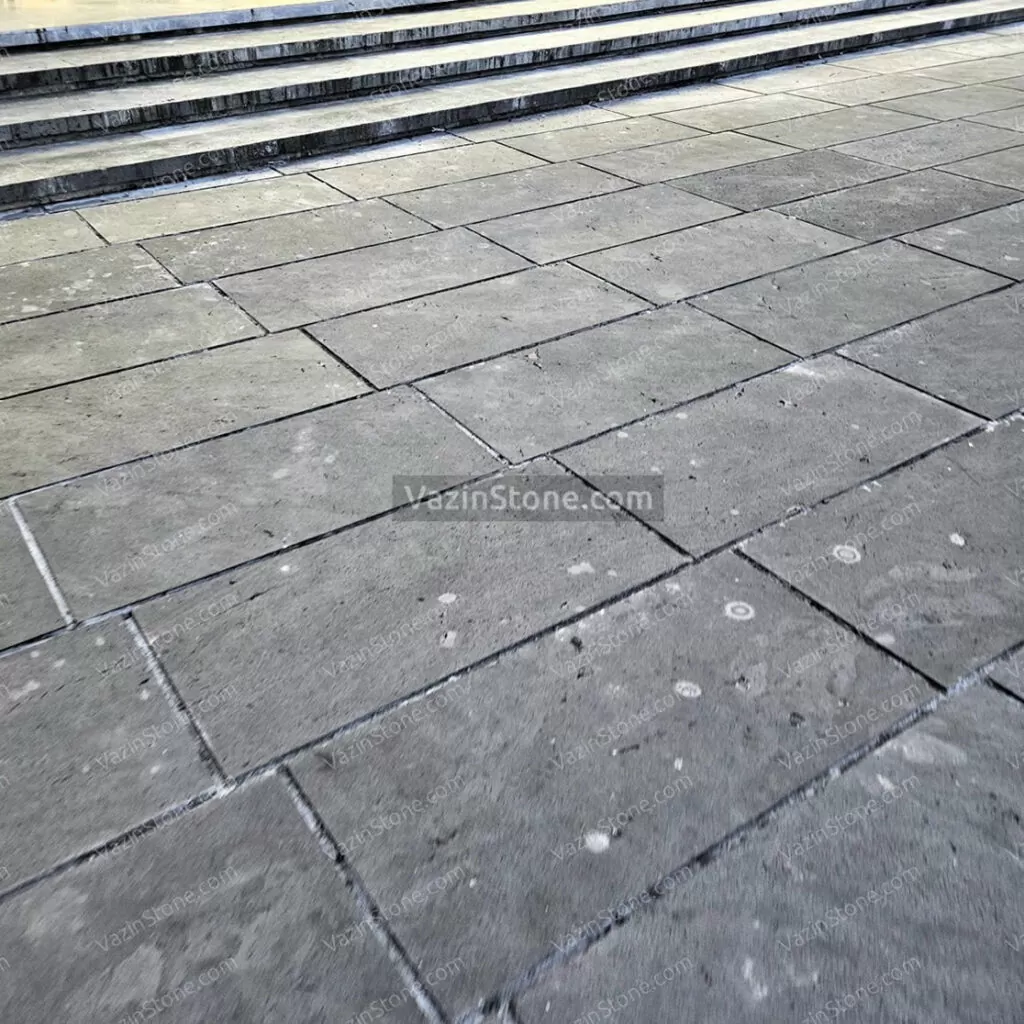
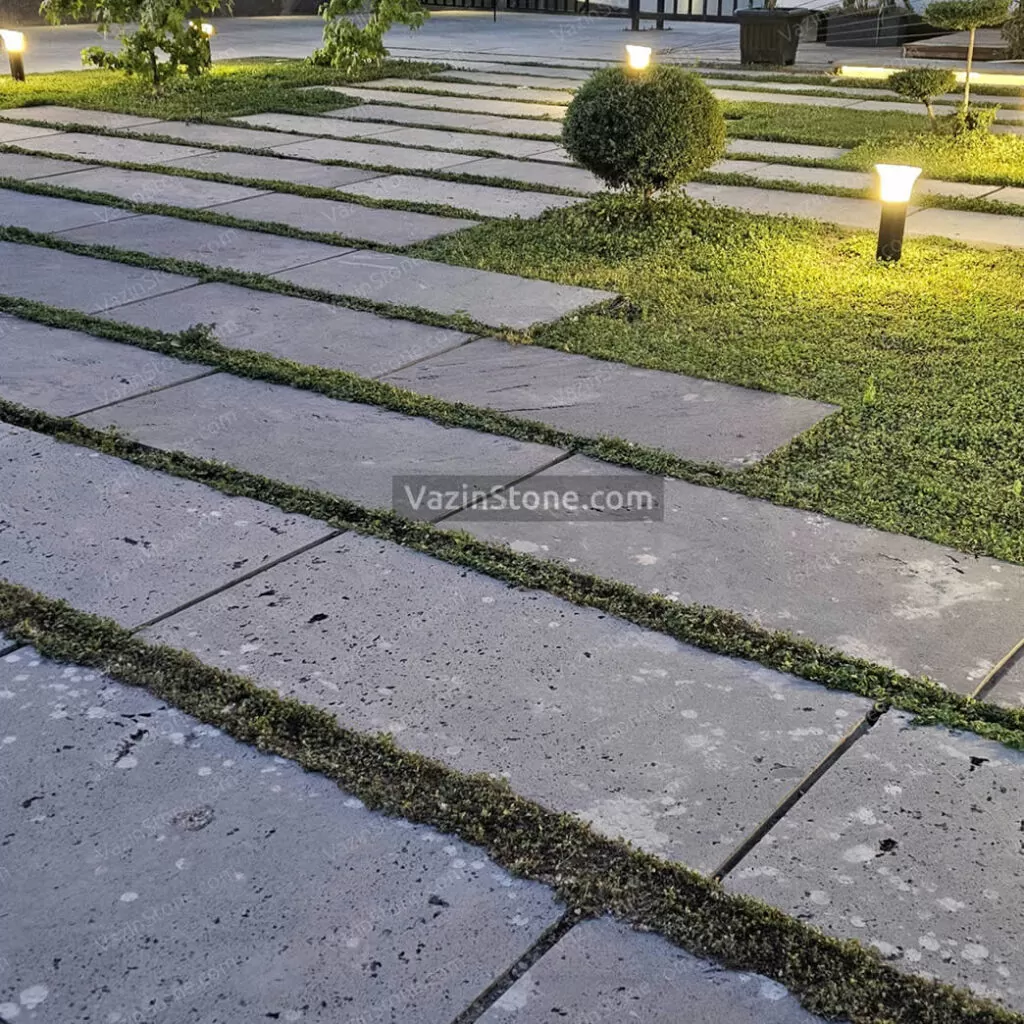
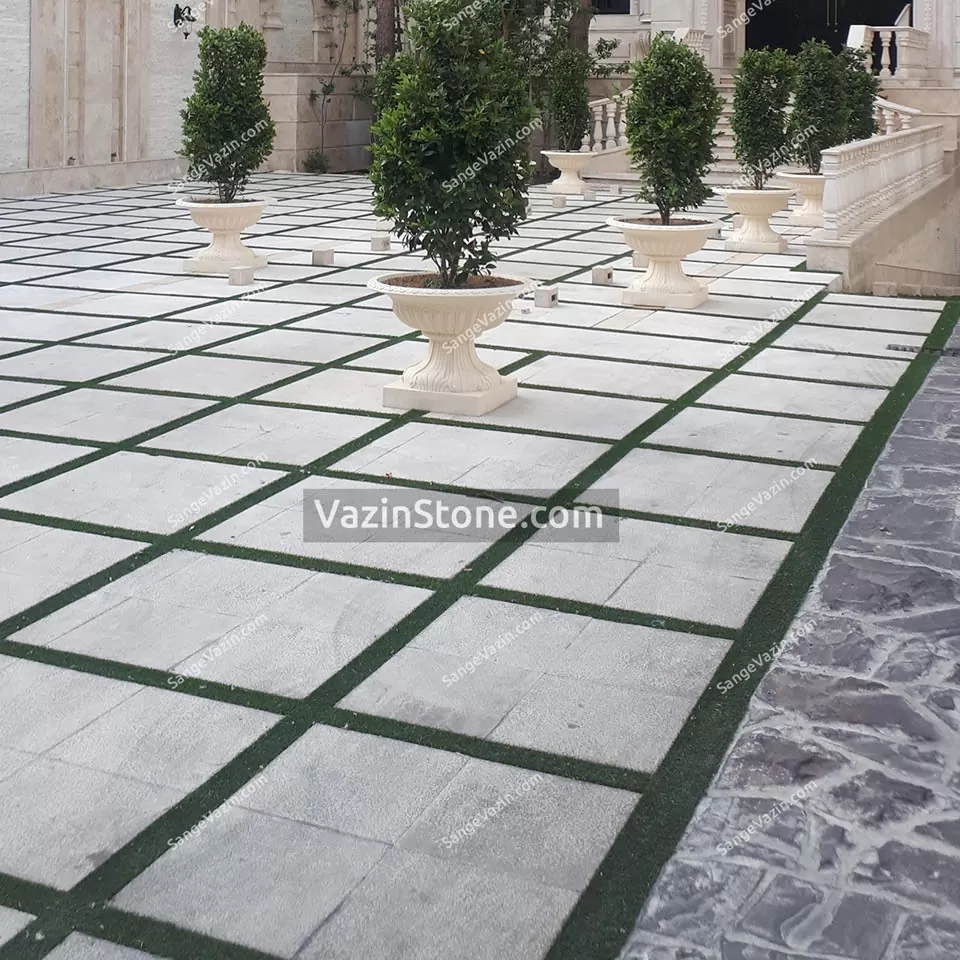
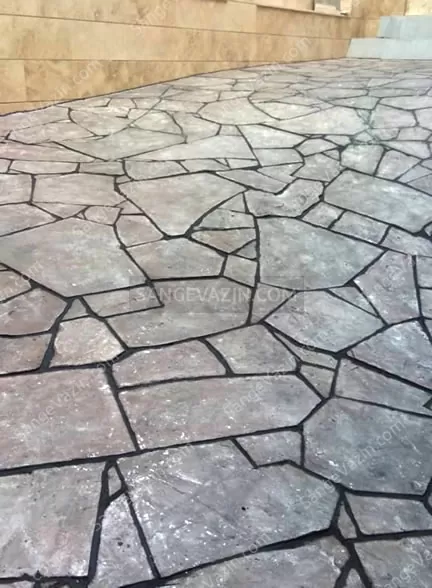
Floor Stone Color
Select a color that fits with your home’s interior design. Also, the building owner should select the stone for the building’s floor from the beginning on their personal preferences and the designer’s recommendations; because the building’s flooring can be changed or replaced, but doing so will need a lot of time and money.
Generally, according to the preferences of the interior designer or architect, floor stones are used outside the home in light and dark tones (a range of colors, patterns, and features) and inside the home in light tones (white and cream).
Advantages Of Using Stone On The Floor
Stone has a plethora of features and is one of the materials that humans use the most. Some of the main features of a high-quality building floor stone will be explained in the following parts:
- It’s extracted from the nature
- Suitable for any space
- Excellent durability and high longevity
- Variety in color, pattern, and texture
- Make the space beautiful for a long time
- Distinct beauty
- Great polishability and repolishing ability
- Simple cleaning and maintenance of floor stone
- No scattering and beneficial in lowering allergy levels
Pebble stones can be used for outdoor flooring and landscaping along with natural stones. Pebble stones match any space in addition to being highly resistant and durable.
Disadvantages Of Using Stone On The Floor
The following are typical disadvantages of utilizing various types of stones in a building’s interior and exterior design and decoration:
- Its polished type is slick (because of this reason, it shouldn’t be utilized for bathroom flooring).
- Compared to wood and parquet, stone has a cold nature.
- Some types of stones are very expensive.
- It makes the building heavy because it is heavier than parquet flooring.
All Types Of Stones For Building Floors
For flooring, materials such as stone, wood, and such things can be utilized. Stones that can be used for flooring include travertine, marble, granite, crystal marble, limestone, traonyx, sandstone, and onyx.
This part will give you an overview of the names and features of three of the most significant floor stones that can be used for both indoor and outdoor flooring:
Granite Floor Stone
Because of its extremely high resistance and relatively smooth and slippery surface, it`s appropriate for use as a parking lot floor and balcony.
Crystal Marble Floor Stone
Crystal Marble is a very adaptable stone with an attractive appearance. It can be used both indoors and outdoors. It is proper for places with soft and slightly hard usage.
Marble Floor Stone
The uniform and highly polished surface makes it the best option for indoors.
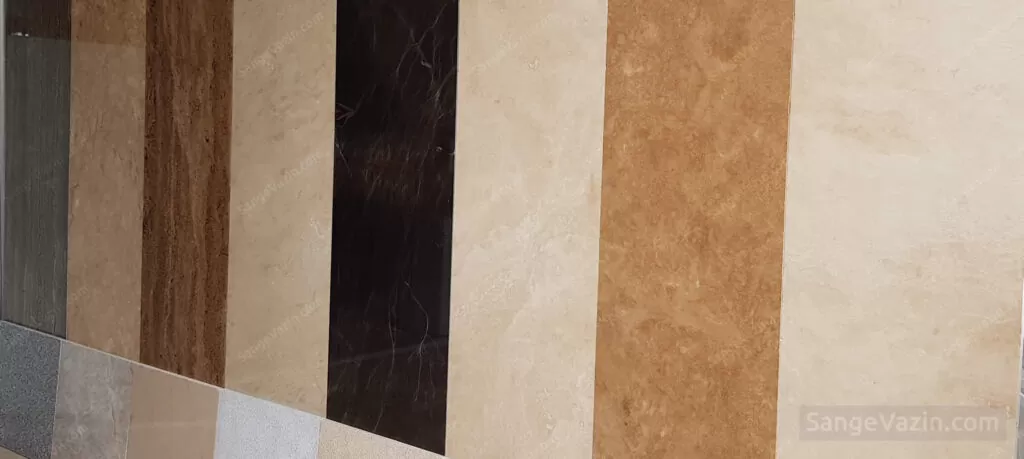
Travertine Floor Stone
The polished type is appropriate for indoor usage, and the natural-finished, thick, resin-free type is ideal for outdoor usage.
Important Points For Choosing A Proper Floor Stone
When choosing a floor stone for your building, there are a few things you should know about the different types of stones and their features before making a purchase. Also, there are a few things you should always keep in mind when installing the floor stone.
- First marble and then travertine are the best options. Also, at the next level and for luxurious places onyx stone usually is utilized. It is important to pay attention to the exact size of your chosen place.
- Store more than necessary of a particular floor stone in case of unforeseen issues.
- Pay attention to the function of the place.
Points 1: when purchasing stones, we should consider the unique features found in places like residential buildings, hospitals, or industrial workshops and select stones that best suit our requirements. However, the building’s floor should be made of stones with strong resistance and a low water absorption percentage.
Points 2: The floor stone‘s contrast with the surroundings is one of its most noticeable aspects for both indoor and outdoor buildings. As a result, this material is utilized to cool spaces in warm places, whereas various heating techniques are used in colder climates to heat building floors.
1/ Floor Stone Inside The House:
Marble is the ideal material to use, then travertine. Then at the luxurious level, onyx is utilized. Marble is the most popular and highly valued option when it comes to floor stones. Because, when it comes to building flooring, this stone’s surface is comparatively more uniform than that of its rivals. Also, the floor in your house will look wonderful because of its highly polished and shiny surface.
2/ Floor Stone Inside The Building & Outside The House:
Granite is used after marble for indoor spaces like staircases.
3/ Floor Stone For Outside The Building:
Granite stone is the greatest choice to use on the floor of the buildings outside. Basalt and cubic stones are also regarded as appropriate, standard, and durable choices for outside flooring. Also, if you’d like, you can utilize high-thickness, natural-finished marble and travertine items. (A thickness of less than 2 cm will increase the chance of breaking and cracking).
 Maya crystal marble stone slab$110 – $150
Maya crystal marble stone slab$110 – $150
Publish on:
January 13, 2024
Quality guaranty
Fast delivery
Price guarantor
Customers Club

